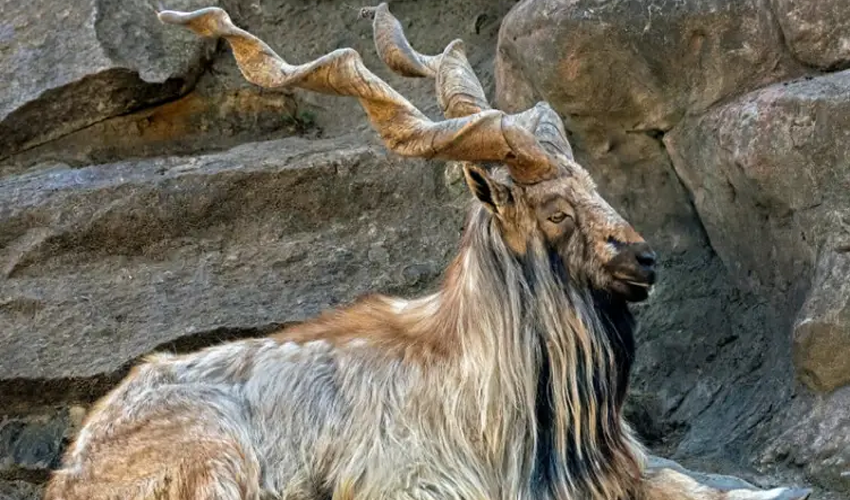The population of Markhor - Pakistan's national animal - has witnessed a remarkable surge in the picturesque landscapes of the Khyber Pakhtunkhwa province.
Revered for its agile nature, distinctive appearance, and imposing spiral horns, the Markhor holds a special place in the nation's biodiversity.
The Khyber Pakhtunkhwa Wildlife Department recently released a report heralding a substantial increase in the Markhor population, with numbers reaching an impressive 5,621 in the province.
This surge is particularly significant given the species' preference for the highest mountainous terrains, including regions in Chitral, Kohistan, and Kalam, within Khyber Pakhtunkhwa, as well as the northern Gilgit-Baltistan region.
Markhor's strongholds
The report highlights specific regions contributing to the population boom, with Chitral leading the way at 2,427 Markhors, followed by Kohistan with 660, and Swat with 159. These figures indicate a positive trend in the concerted conservation efforts aimed at preserving this iconic species.
One of the primary factors attributed to this population upswing is the heightened awareness surrounding the illegal hunting of Markhors, especially in the Swat and Kohistan regions.
Conservationists credit the success to increased vigilance and strict measures against poaching, with a focus on safeguarding the natural habitats of these remarkable creatures.
The Markhor, with its long winter coat and majestic horns reaching lengths of over 1.5 meters in males, serves as a symbol of Pakistan's rich wildlife heritage.
Found in some of the most challenging terrains, the survival and prosperity of the Markhor are indicative of the country's commitment to preserving its natural treasures.


























